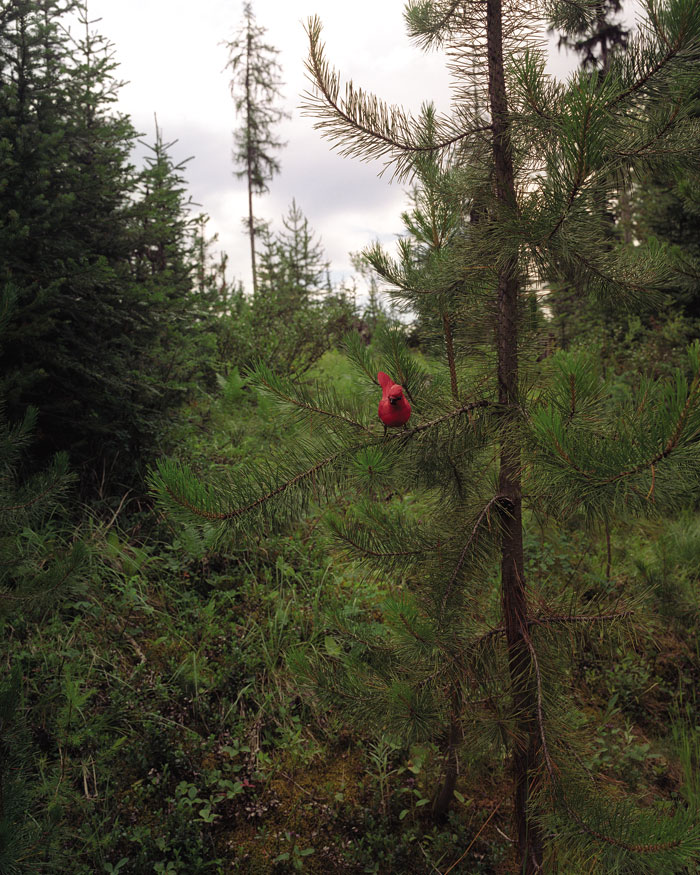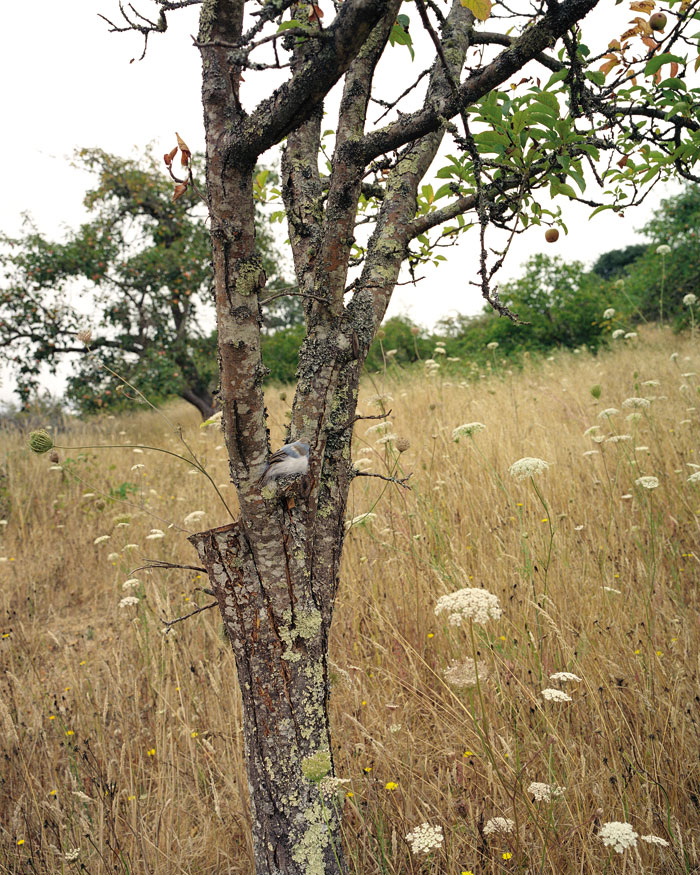Bird Watching
Paula McCartney’s portraits of fake birds in real landscapes are not digitally enhanced, but they do trick the eye.

Interview by Rosecrans Baldwin
Paula McCartney’s Bird Watching (Princeton Architectural Press), is a guidebook to birds as they might be ideally seen: perfectly colored and posed, and not migrating anytime soon. Which is probably both a fantasy scenario and a repulsive one for dedicated twitchers—maybe the first example of bird-watching pornography? Read the interview ↓
All images used with permission, © copyright the artist, all rights reserved.








Artist interview
Was there a first bird that inspired this series?
The first “real” birds that inspired this series were all the ones I encountered, or rather didn’t encounter, on hikes in the woods who would only show a feather or two, who flittered about too quickly, or would chirp loudly and constantly, without ever revealing themselves. But since they would not cooperate, I decided to buy my own birds and make idealized landscapes, where the viewer and I could actually see the birds in the landscape.
The first birds I bought that began this series were a pair of little yellow American Goldfinches, with bright, sunny feathers that I was sure would stand out in the landscape. Oddly enough, I photographed those birds about five different times throughout several years before I made a photograph of them I was happy with.
Are the birds in your pictures recreations of birds you’ve seen in the wild?
In a way yes, but very loosely based. Most of my birds came from craft stores. The nicer ones, the ones with more fanciful detail, were a birthday gift from my husband one year, bought on eBay. The birds have a plastic core covered with fake feathers, and wire coming out of their feet. Some were packaged as actual representations of birds, such as the cardinal or the blue jay, and are pretty good approximations, but most were labeled “assorted.” When choosing which ones to buy, I looked for vivid colors that would stand out in the landscape. When they didn’t look like a specific bird, I searched through my birding guides (that I buy because I’m interested in how different things are classified and labeled), picked out a body shape that matched, and created a name—such as Pacific Mockingbird. With that bird I thought the body resembled a mockingbird and I photographed it in Oahu, so the name seemed appropriate enough.
Were you a birder before (or after) this book?
No. I’ve never officially been bird watching. I’m a very impatient person and couldn’t imagine sitting somewhere for hours waiting for a bird to land in front of me. I do, however, stop to look at birds on walks, but that experience usually lasts just a few seconds before they fly away.
Among other functions, the birds here prettify their environments. How did you want nature to be portrayed?
The birds are meant to act as a decoration, making the landscapes more interesting than they are on their own. When I lived in New York City, I photographed the bird aviaries at the Bronx Zoo, elaborate constructions that transported the viewer, and hopefully the birds, from the Bronx to jungles and other exotic landscapes. This began my interest in the idea of constructed landscapes—ones that begin with or are inspired by a natural environment, but that have been improved upon in some way. In my Bird Watching photographs, rather than settling for what nature had to offer, I took control and adorned the trees with songbirds. So, in the end, nature is nice, but somewhat lacking.
What are you working on now?
I’m in the middle of a project titled A Field Guide to Snow and Ice. This series is my interpretation of the idea of winter. It includes images of snowfalls and wildflowers, frozen waterfalls and stalagmites, snowdrifts and piles of gypsum sand, as well as other icy forms that explore and reinterpret natural structures and the way they can reference multiple ideas on both micro and macro levels. I now see winter everywhere, in every environment, in every season, and categorize it by pattern, shape, and line rather than merely by substance. I found my own Alps in the snowplowed piles of sand along the side of the road at White Sands National Monument, and was fascinated by the way scattered calcium sulfite deposits on a lava bed spoke to a snowfall at night—both yearned to be the cosmos.
